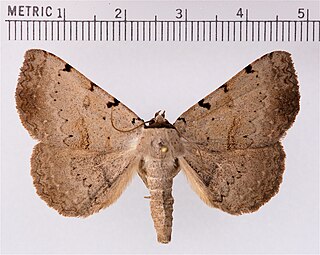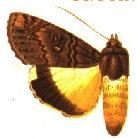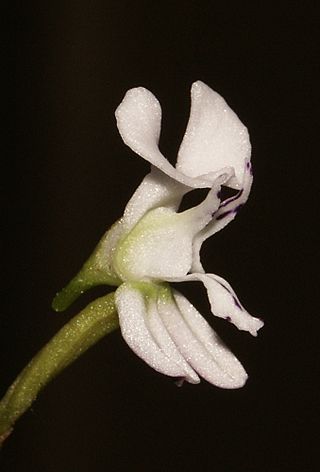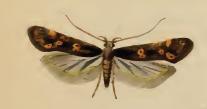
Baccharis is a genus of perennials and shrubs in the aster family (Asteraceae). They are commonly known as baccharises but sometimes referred to as "brooms", because many members have small thin leaves resembling the true brooms. They are not at all related to these however, but belong to an entirely different lineage of eudicots. B. halimifolia is commonly known as "groundsel bush", however true groundsels are found in the genus Senecio.

The inferior sagittal sinus, within the human head, is an area beneath the brain which allows blood to drain outwards posteriorly from the center of the head. It drains to the straight sinus, which connects to the transverse sinuses. See diagram : labeled in the brain as "SIN. SAGITTALIS INF.".

The Catocalini are a tribe of moths in the family Erebidae. Adults of many species in the tribe are called underwing moths due to their vividly colored hindwings that are often covered by contrastingly dark, drab forewings.

Brazil has great forests. Minas Gerais, Brazil's central state, larger domain is the tropical forest. Within it there are many types of plants. Separated by families this is a list of these plants:

Ulotrichopus is a genus of moths in the family Erebidae. The genus was described by Wallengren in 1860.

Audea is a genus of moths in the family Erebidae.
Crypsotidia is a genus of moths in the family Erebidae.

Tachosa is a genus of moths of the family Erebidae. The species of this genus are found in Africa.
Procladiini is a tribe of midges in the non-biting midge family (Chironomidae).

Disa sagittalis is a species of orchid found in South Africa from south and southeast Cape Province to southern KwaZulu-Natal.

Mirificarma lentiginosella is a moth of the family Gelechiidae. It is found from most of Europe to the Ural Mountains and Turkey.
Mirificarma interrupta is a moth of the family Gelechiidae. It is found in Portugal, Spain, France, the Benelux, central Europe, Romania and North Africa.

Tachosa acronyctoides is a moth of the family Erebidae.
Tachosa aspera is a moth of the family Erebidae. It is found in Angola, Ethiopia, Namibia, Nigeria, Rwanda, Tanzania and Uganda.
Tachosa fumata is a moth of the family Erebidae first described by Hans Daniel Johan Wallengren in 1860. It is found in Angola, Burkina Faso, the Democratic Republic of the Congo, Ethiopia, Kenya, Mauritania, Namibia, South Africa, Tanzania, Uganda and Zimbabwe.
Tachosa guichardi is a moth of the family Erebidae. It is found in Ethiopia, Kenya, Nigeria, Saudi Arabia, Tanzania and Yemen.

Crotalaria sagittalis, known as arrowhead rattlebox or just rattlebox, is an annual wildflower native to the United States, Midwestern and Eastern states.

Scythris grandipennis is a moth of the family Scythrididae found in Europe.

Genista sagittalis, called the arrow-jointed broom and winged broom, is a species of flowering plant in the genus Genista, native to central and southern Europe, Ukraine, and Anatolia. Its subspecies Genista sagittalis subsp. delphinensis, called rock broom, has gained the Royal Horticultural Society's Award of Garden Merit.








